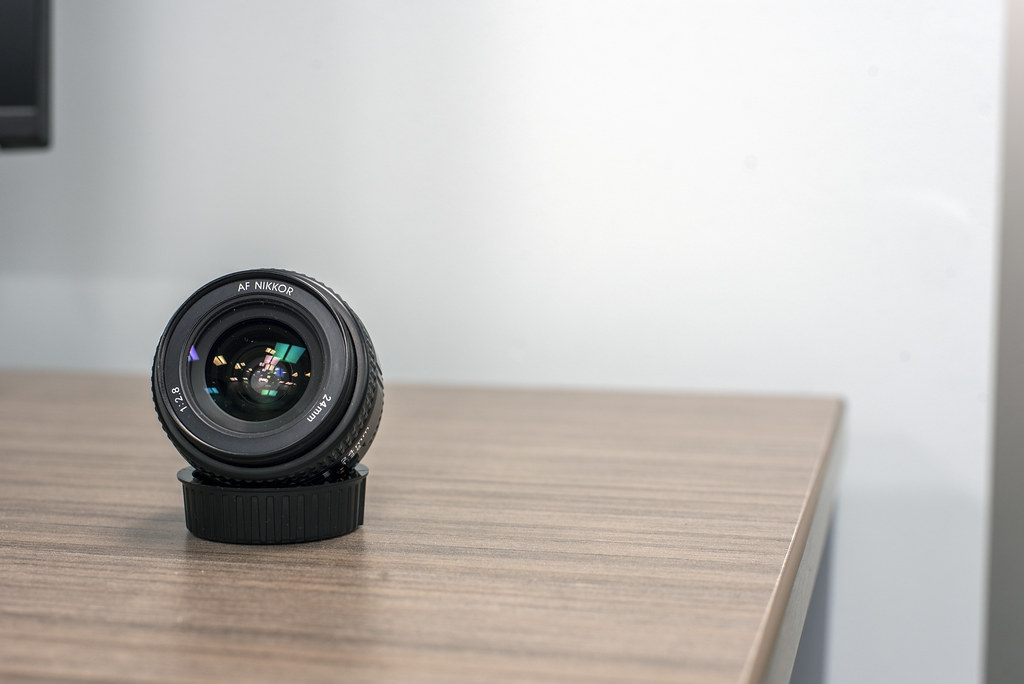The gift of a Nikon F80 kickstarted my deep dive into photography and a return of film as a medium in my toolkit. With the F80 came a selection of lenses; some were good, and others were cheap. And only one of the lenses (AF Nikkor 35mm f/2D) I got with that F80 remains intact in my kit today. But there was one lens from that kit that I missed the most, the AF Nikkor 24mm f/2.8D. As I mentioned in last month’s lens review, the D-Type lenses can carry a high price on the used market, but the Non-D lenses can be had for a much more affordable price. So when I was offered two second-generation AF lenses, the previously reviewed 28mm f/2.8 and, more exciting to me, the 24mm f/2.8. And yes, I have the excellent 14-24mm f/2.8G, but that’s a heavy lens, and when space is an issue, you want something more compact. And while this lens has some pain points, overall, it fills in a gap that has been missing for many years.
Lens Specifications
Make: Nikon
Model: AF Nikkor 24mm 1:2.8
Focal Length: 24mm
Focal Range: ∞ – 0.3m
Aperture: f/2.8 – f/22, 7 Blades
Structure: 9 Elements in 9 Groups, with Close-Range Correction

Nikon D750 – AF Nikkor 24mm 1:2.8
Build Quality
As a second-generation AF lens from Nikon, the 24mm f/2.8 bears a solid resemblance to the third-generation D-Type lens but is unlike the 28mm f/2.8; it has many more exterior differences between the second and third copies. The lens has a plastic exterior case, but the interiors are metal, along with the lens mount. This means that the parts that take the most stress are the strongest. Being a second-generation lens, the focusing ring is large and has a checked rubber texture making it easy to use and find without taking your eyes off the viewfinder. It also has a dedicated aperture ring and an AI(-S) follower, allowing use on older autofocus and manual focus bodies; as long as the camera supports AI(-S) lenses, there is no claw. Optically, this lens with its 9-Element construction dates back to 1977 with the AI Nikkor 24mm f/2.8 and remains unchanged (even to the later third-generation 24mm f/2.8D). And it also has close-range correction built into the lens. However, there is one stand-out to this lens, and that is how much the front element pokes out from the main body of the lens. I don’t see this as a significant problem, but it was corrected in the third-generation version. It might cause some difference in carrying the lens in a bag, so best to keep that lens cap on. The filter ring is Nikon’s standard 52mm, so all your existing filters will work, and it takes the HN-1 hood.

Nikon D750 – AF Nikkor 24mm 1:2.8
Nikon D750 – AF Nikkor 24mm 1:2.8
Nikon D750 – AF Nikkor 24mm 1:2.8
Nikon D750 – AF Nikkor 24mm 1:2.8
Nikon D750 – AF Nikkor 24mm 1:2.8
Image Quality
This lens is probably so good despite being of an older generation because the image quality is superb! That 9-Element design with close-range compensation sets it apart from other wide-angle lenses in my arsenal. There is some barrel distortion with this lens, but not as much as I had expected; you also run into severe fall-off and vignetting when shooting at f/2.8. In both cases, these are easily corrected as Adobe has a preset that will correct both when running your images through Photoshop or Lightroom. But once you stop the lens down, the fall-off and vignetting have vanished by f/4. The out-of-focus rendering is superb, with smooth edges and minimal ghosting. Nothing overly special, but you don’t shoot wide-angle to get a beautiful bokeh either. And these images are sharp; at any aperture from f/2.8 to f/22, ever is in focus is clearly defined and looks sharp! There is also a flare issue, mainly because of how far the front element sticks out from the main body, but adding an HN-1 hood will help reduce this flare. The lens produces wonderful images with digital and traditional film mediums and has beautiful colour and contrast rendering.
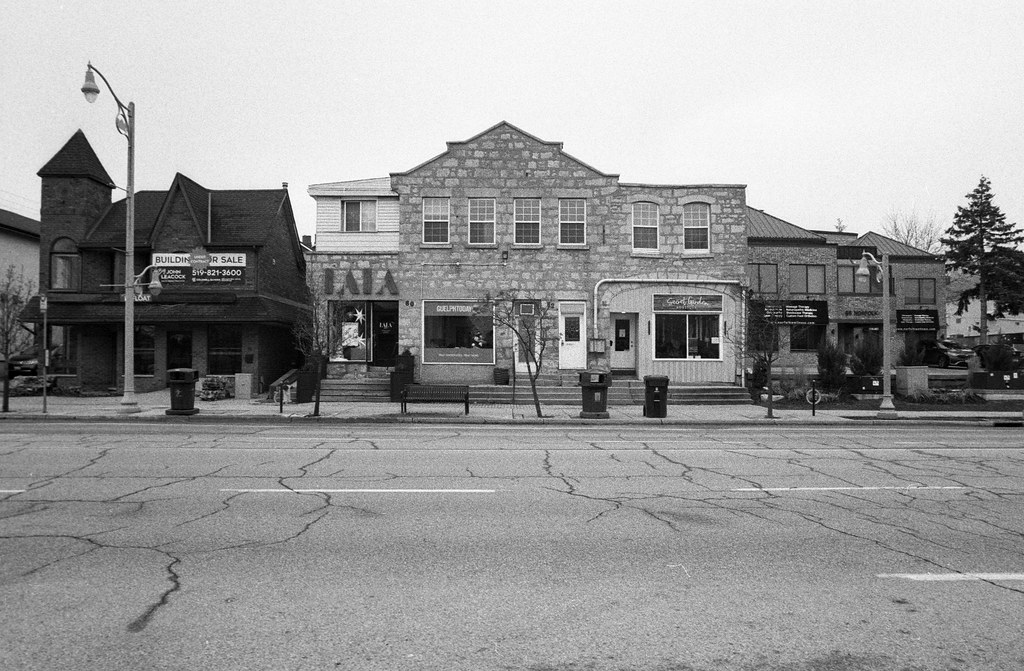


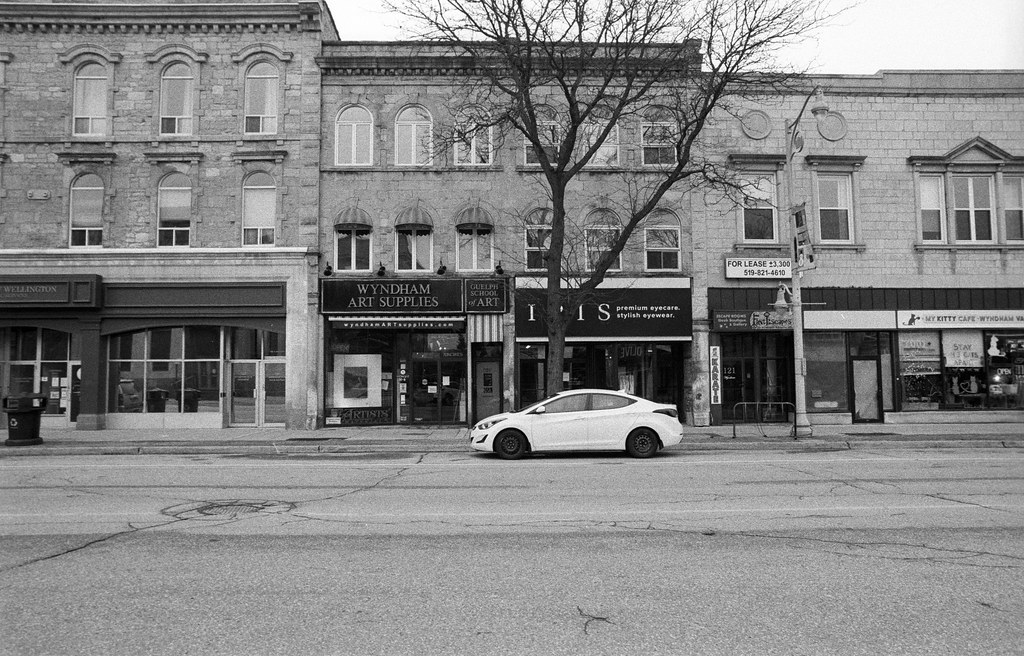
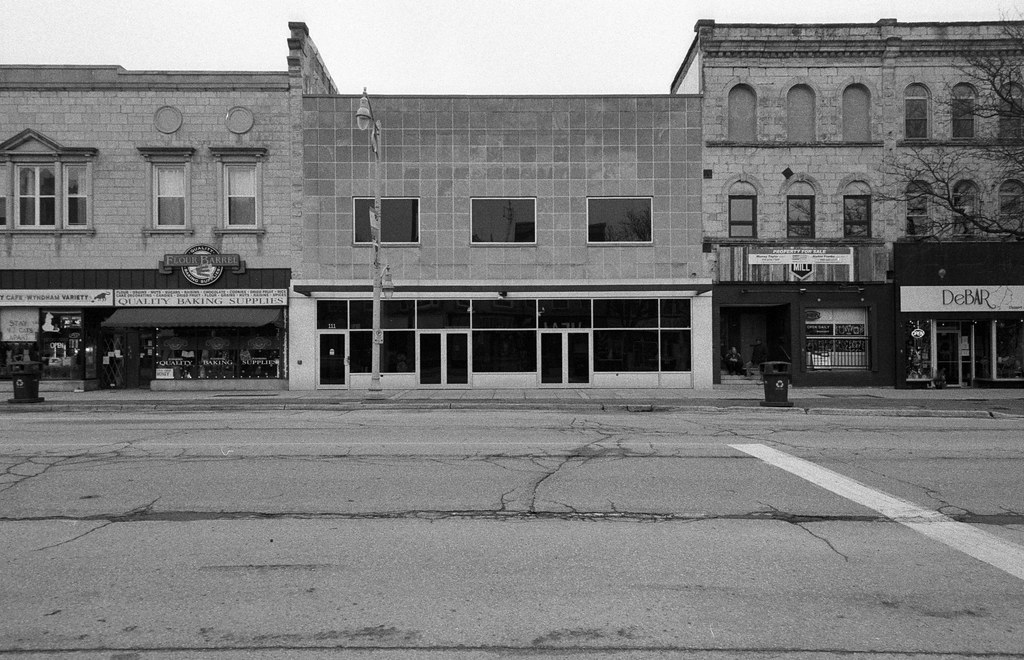
Applications
Being a wide-angle and on the narrow end of the ultra-wide angle, you can do much with the 24mm f/2.8 lens. I use this lens the most when capturing landscapes and cityscapes. You can get the big picture in almost all situations without simultaneously being insanely wide. And if you’re working in narrow urban settings, you don’t need to worry about needing as much room; you can usually get the whole image without having too much space to back up. It also works well in low light with that f/2.8 aperture and captures large groups of people in many situations. Plus, being a 24mm lens, you don’t need to stop the lens down too much before enough of the frame is in focus. While not my first choice for portrait work, if you like wide-sweeping environmental portraits, you can certainly use this lens. And if you’re into some interesting looks, the 24mm can make for a fun close-up portrait lens. And given you can focus up to 0.3m, you can get in relatively close and have CRC capabilities; things won’t look too weird. This lens is both forward and backwards compatible. You can mount and use this lens on any camera that accepts AI(-S) lenses, and it works well on manual and autofocus cameras. The one thing to note is that any AF body you mount this lens on must have an AF motor. I can mount this lens on my FE2 or my D750 without difficulty.
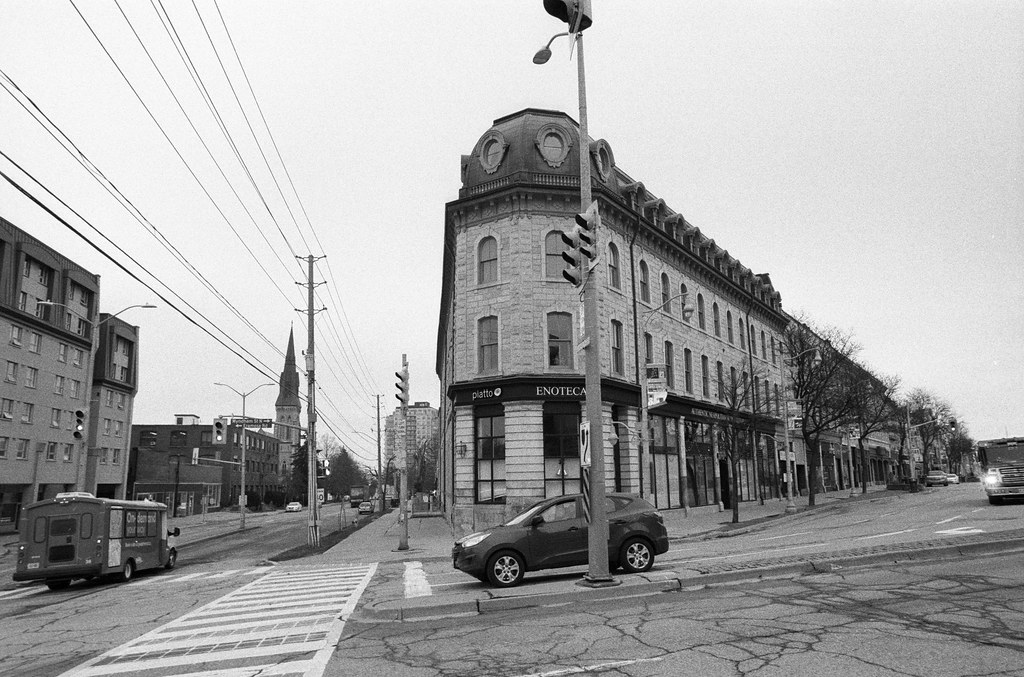
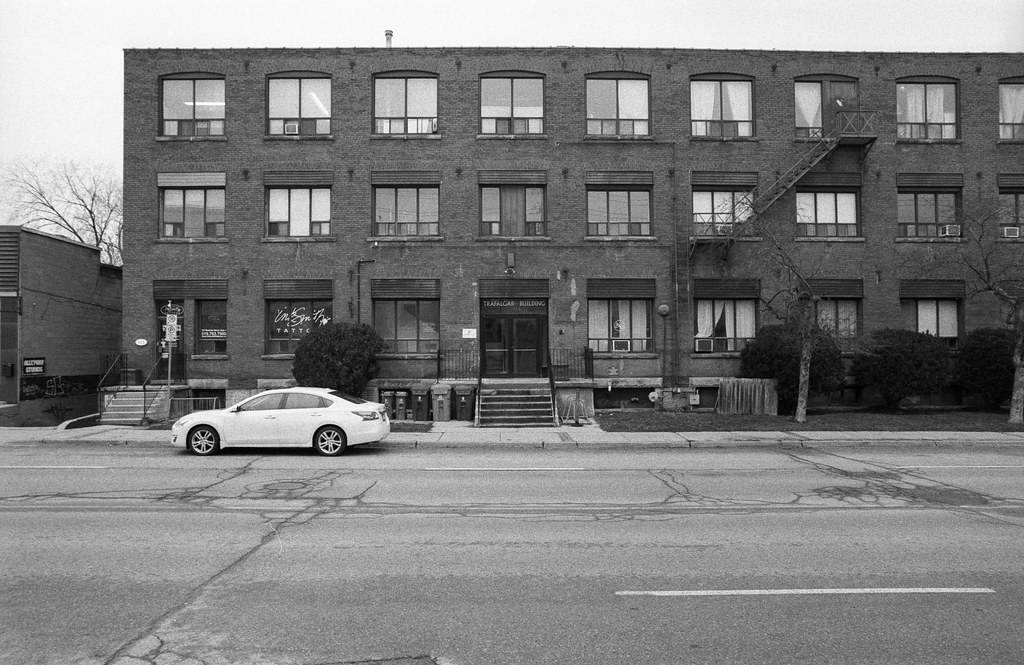
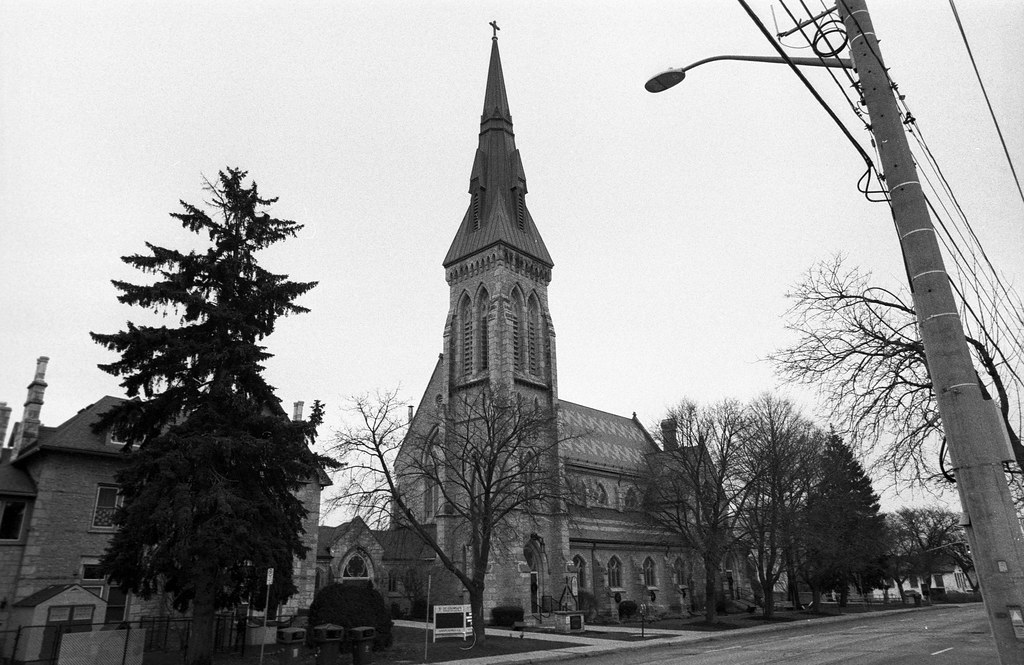
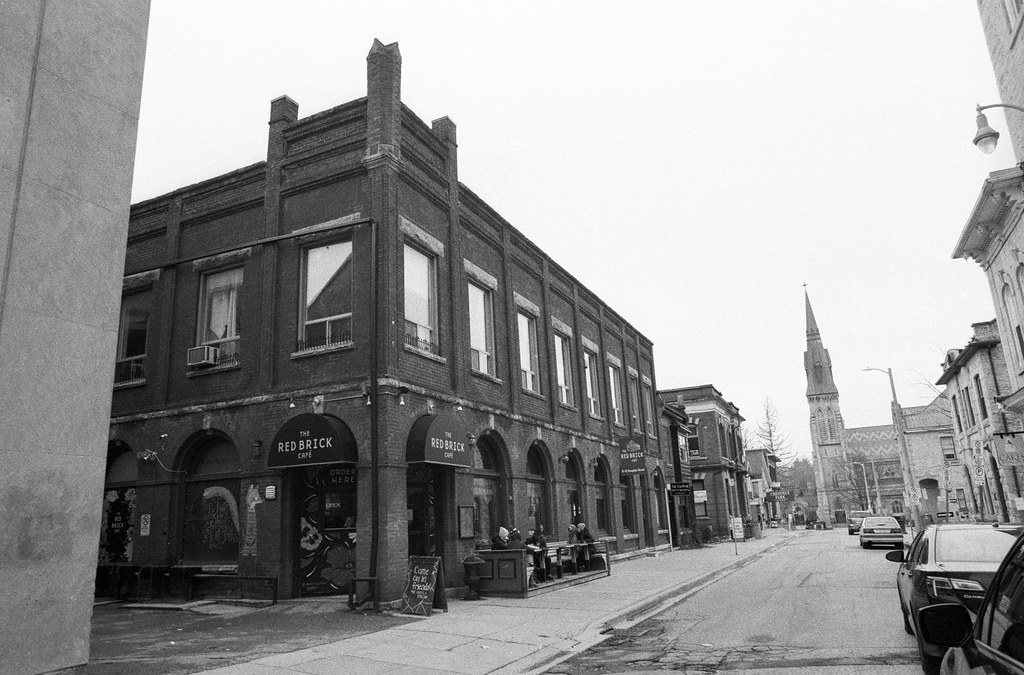
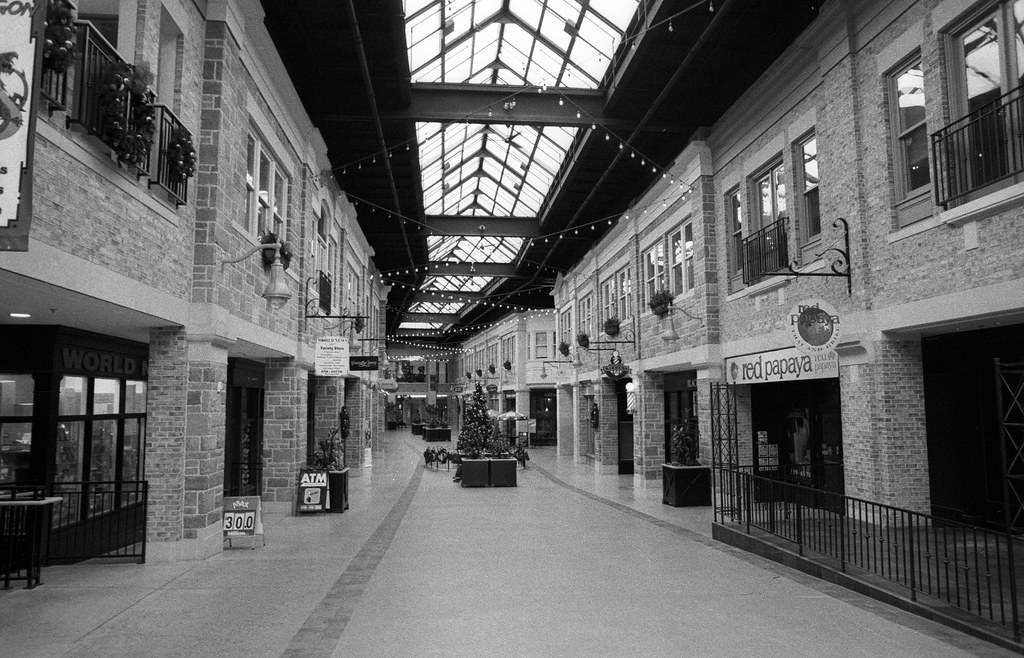
The Low Down
The Nikkor 24/2.8 is a lens that I would classify as a lens you want but may not always need. As someone who loves to explore little towns, this lens is perfect as I often face narrow streets and not having as much space to back up to get the whole picture in my frame. It also presents an option when space is an issue, and I can’t bring my heavy hitting 14-24/2.8G; I can still get that close-to-ultra-wide focal length and have a fast lens simultaneously. On the used market, the lens is affordable, with the second-generation copy going for 140$ on average, which will often come with the front and rear caps. Sometimes the HN-1 hood will be included, but I have not seen any that comes with the box. If you are looking for a third-generation D-Type lens, you will expect to pay between 150$ and 200$ for a copy. I like this lens, and I’m glad to have the focal length in a prime form back in my kit; while not always the lens I reach for these days, I’m glad to have it as it has certainly helped out in a few situations already.
Further Reading
Don’t just take my view on the AF Nikkor 24mm f/2.8; check out these other reviews.
No reviews on the second-generation AF Nikkor 24/2.8; all reviews are related to the third-generation D-Type lens.
